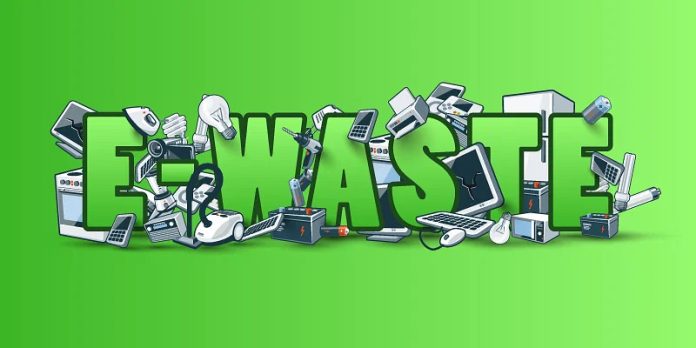The E-Waste Management Market is likely to hold the global market at a moderate CAGR of ~13% during the forecast period. The global market holds a forecasted revenue of US$ 56.98 Billion in 2022 and is likely to cross US$ 193.42 Billion by the end of 2032.
The demand for e-waste management is rising as manufacturers in the electronics sector attempt to create consumer electronics, electrical, and electronic products with shorter lifespans. Opportunities for producers in the e-waste management market are expanding due to the rising demand for upgrading to the most recent technology. Several market players are making significant efforts to recycle e-waste to lessen the environmental and pollution risks that would arise from this.
Factors Supporting the E-Waste Management Market Growth
With fast-rising product innovation, notably in household electronics and appliances like the switch from analogs to digital technologies, monitors, and flat-screen televisions, the e-waste management market is predicted to experience revenue growth. In the next four years, managing e-waste is expected to increase by over 33%, according to the UN.
There are now more prospects for the e-waste management sector to flourish, thanks to partnerships between top manufacturers like Dell, HP, and Cisco from Japan, China, and England and international groups solving the E-waste Problem (StEP). The market for e-waste management is projected to experience revenue development due to an increase in the number of refrigerator sets being discarded from domestic appliances.
The WEEE (waste electrical and electronic equipment) stream, which includes refrigerators, cell phones, laptops, and TVs, is thought to be one of Europe’s fastest-growing streams. As WEEE is a combination of parts and materials, due to its hazardous nature, it causes issues with both the environment and human health. Electronic waste requires the EU to regulate e-waste disposal, which is anticipated to spur the expansion of the European e-waste management sector.
Governments in China and India have made significant efforts to harvest and recycle metals that pose harm to both people and the environment. The market expansion in North America is being driven by an increase in the number of electronic items with shorter lifecycles, such as smartphones, laptops, and PCs, which results in a higher volume of e-waste in the region.
E-waste production is rising as a result of the increasing number of electronic gadgets that require ongoing maintenance or become outdated. Additionally, the overall cost of replacing electrical gadgets is lower than that of fixing them. This has led to an increase in the desire to buy new items, which is supporting the e-waste management market’s revenue growth.
The lack of Recycling Technologies in many Countries are Main Reason for the Loss of Valuable Resources and Pollution
Technology is helping in the production of cheap and affordable appliances, and the lifespan of electronic devices is decreasing day by day. As the new devices are relatively cheaper, people are preferring to purchase new devices instead of repairing older ones. People are also keeping up with newer trends in the market, and changing existing devices to new ones periodically. This is leading to lots of e-waste production and is causing pollution problems.
The chemical toxicity is increasing due to landfills and seepage of mercury and leads in the environment, along with wasting resources such as gold, copper, platinum, lithium, and silver, which are used in making parts and circuits. Such wastage might cause a supply bottleneck of resources. These metals are recoverable, and there are ways to recycle them, but the recovery is being hampered by the lack of advancement in recycling technologies.
Country Insights
United Efforts of Environmental Protection Agencies from different Countries are helping in Sustainable Waste Management.
Environmental Protection Agency (EPA) is an independent executive agency of the United States Government, dealing with environmental protection matters. The EPA works with environmental officials and the government regarding e-waste management. The International E-waste Management Network (IEMN) has brought many environmental officials from Asia, the Caribbean, Latin America, North America, and Africa, and is co-ordinated by US EPA and Taiwan EPA. They are educating on e-waste management and developing new policies and strategies to achieve maximum management.
The EPR Policy is making Producers Dispose of the Waste they are generating, ultimately Reducing Overall E-Waste Generation.
The Extended Producer Responsibility Policy is applied in several countries and this policy is making producers take responsibility for produced goods for their entire life cycle. The EPR is making the producers bear the social cost of e-waste management, as they are producing the products for their profits. In this policy, manufacturers, importers, suppliers, and retailers are referred to as producers. The EPR has defined and regulated laws for the management of e-waste based on items and their disposal methods. This policy is helping in effective e-waste management, as producers are taking back their products and recycling them for the production of new products.
Competitive Landscape
Some key players in the E-Waste Management market are Aurubis AG, Umicore, Sims Metal Management Ltd., Boliden, Stena Metall Group, Tetronics, Electronic Recyclers International, Inc., Triple M Metal LP, Global Electric Electronic Processing, and others.
These are likely to contribute most to the E-Waste Management Market during the forecast period.
- The top e-waste management firm has achieved a significant milestone by collaborating with Audi to enhance battery recycling. The firms have completed the first stage of their intended research collaboration effectively, creating a closed loop for the components made up of reusable high-voltage batteries. Additionally, attempts are being made to add valuable materials to the raw materials bank, which is anticipated to improve the market for e-waste management’s prospects for growth.
- A significant achievement for the e-waste management organization is the announcement of its EPEAT-compliant electronics manufacturer partners. The manufacturing affiliates of ERI have earned the EPEAT designation as true manufacturers in sustainability and circular economy. As a result of this achievement, the e-waste management industry is projected to enjoy attractive growth potential in the long run.









